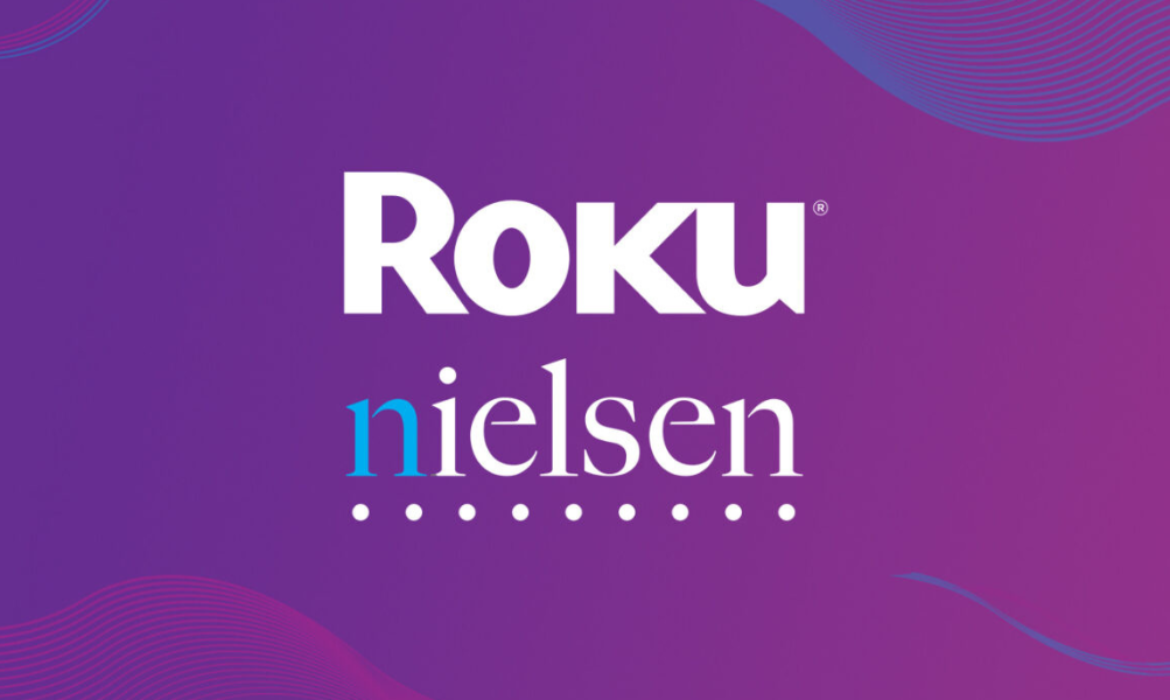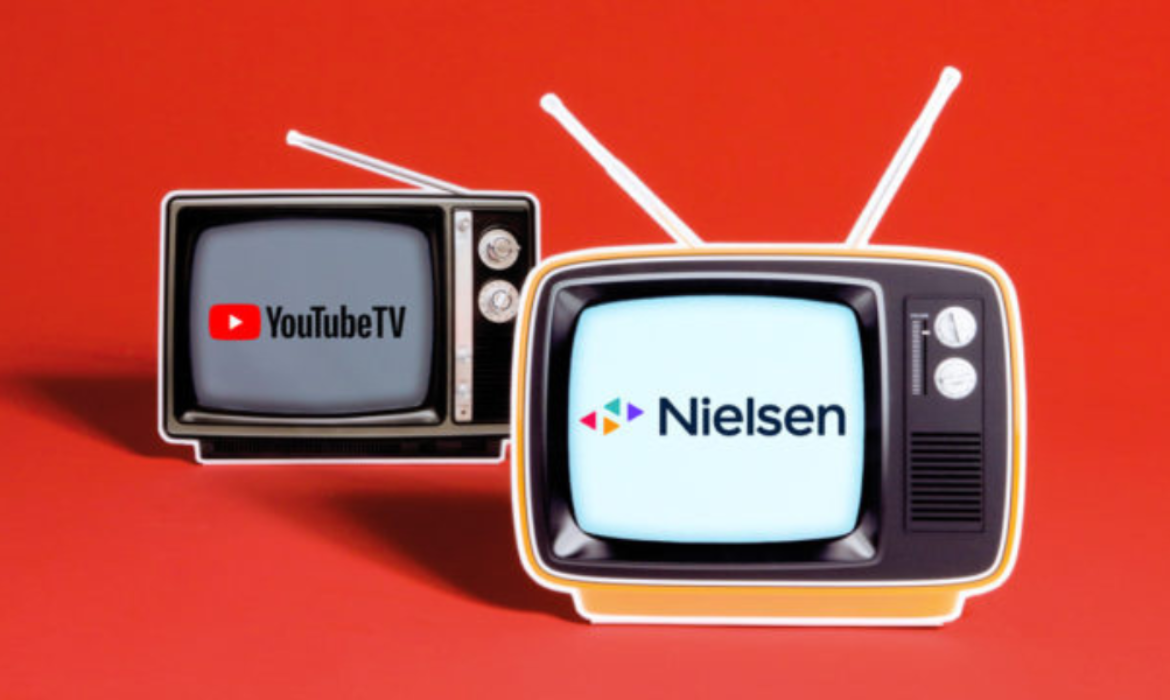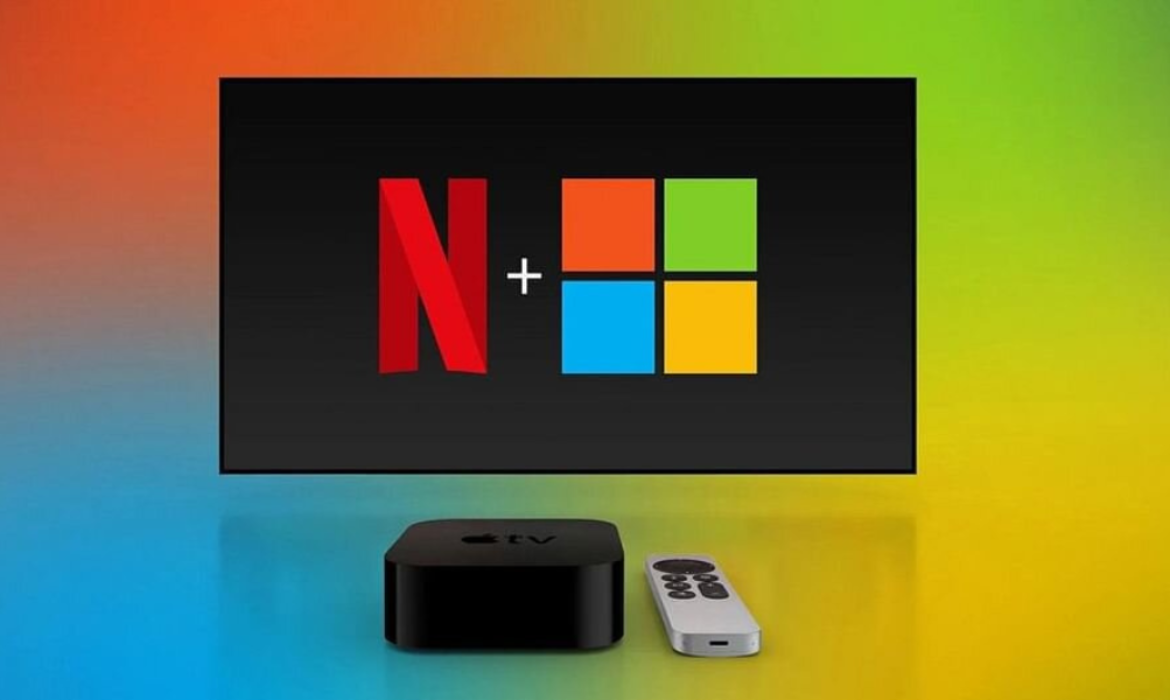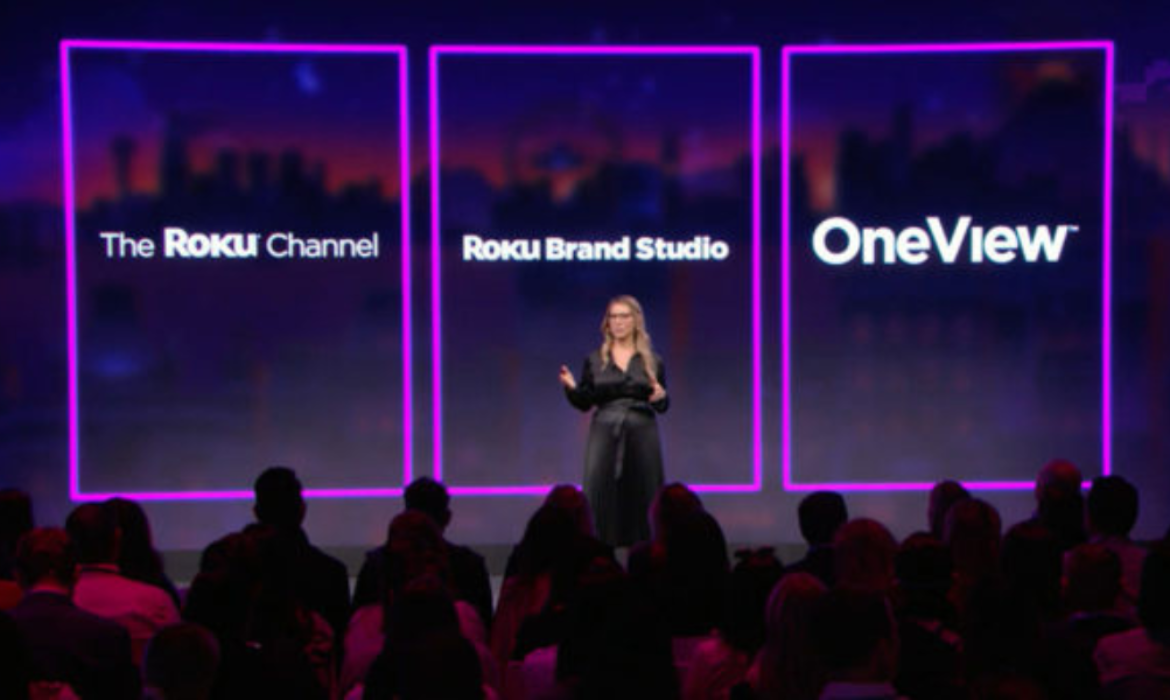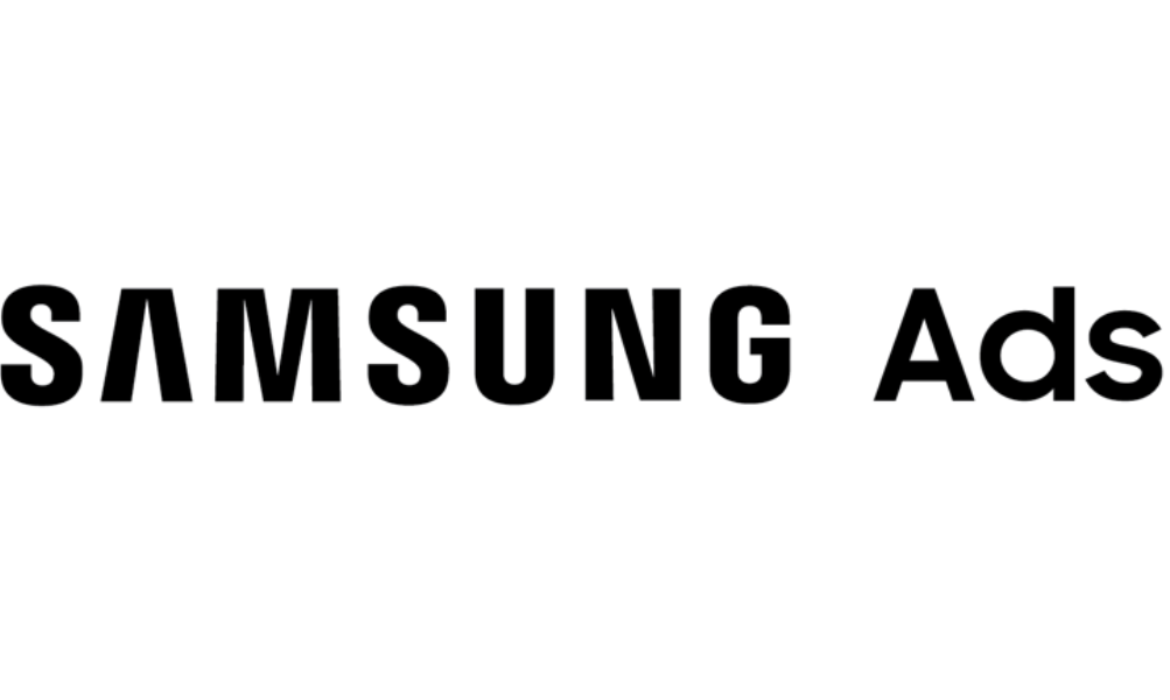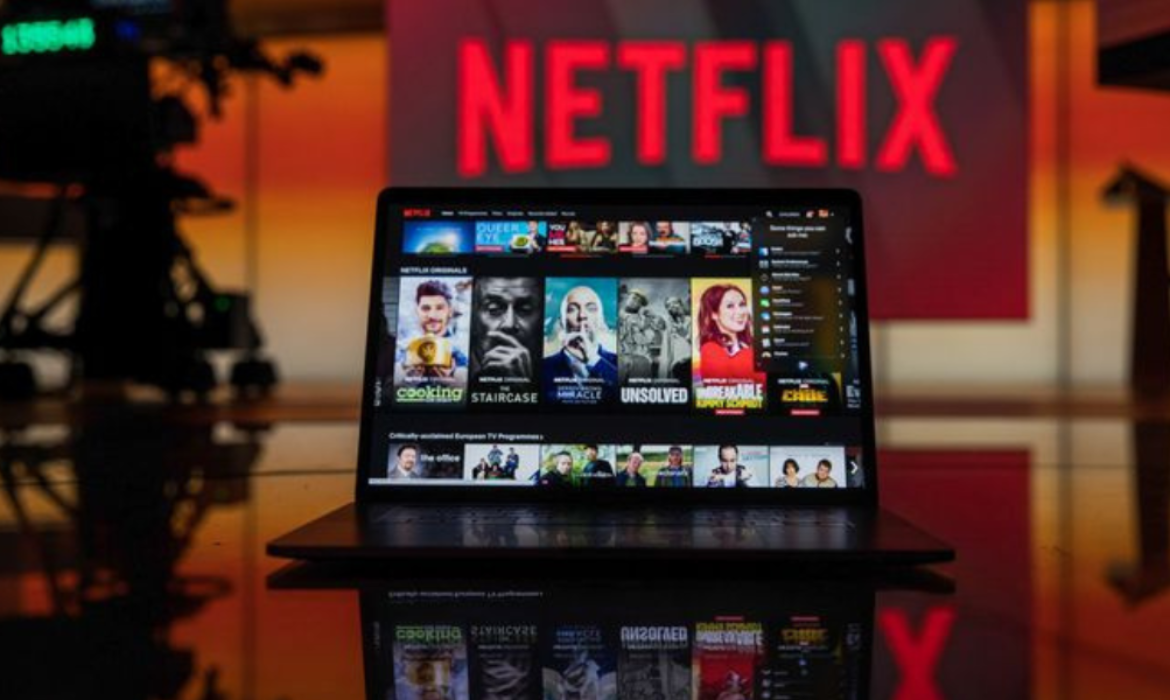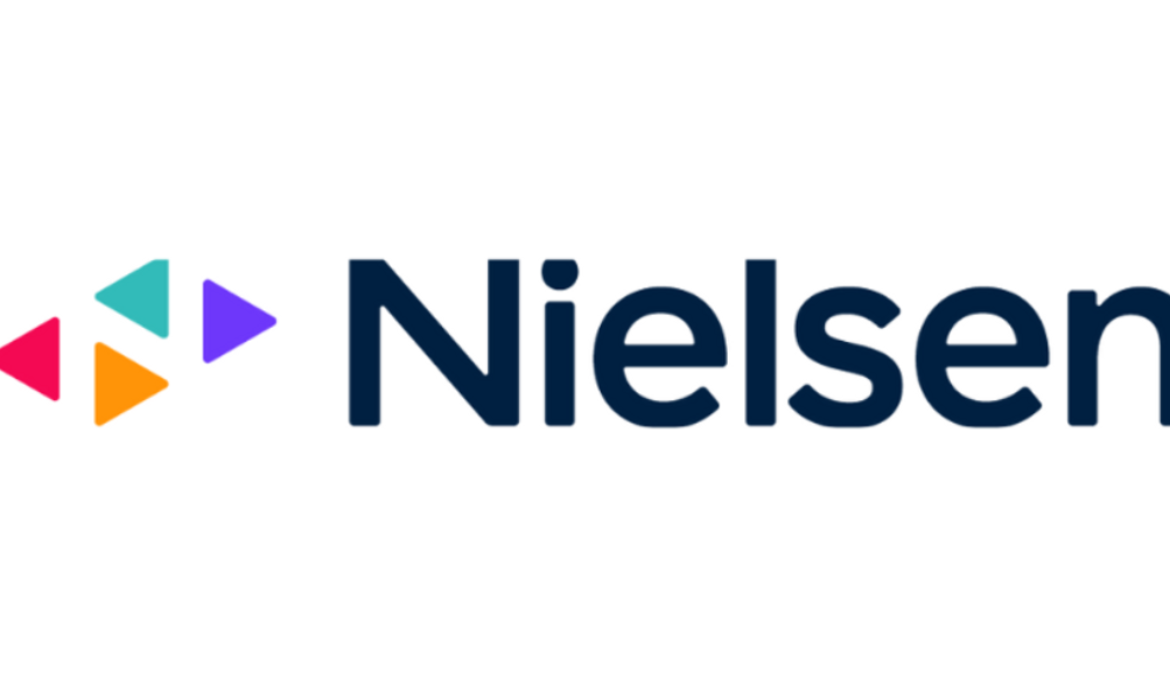Finally Coming! Netflix Reveals Ad Plan Price- Know Everything Here
Finally, the streaming giant unveils its much anticipated ad-supported subscription plan ‘Basic with Ads’.What was once believed unthinkable is a reality today. Ultimately, Netflix needs more revenue and ads are one of the resources to achieve it.
Netflix announced on the press call that it is introducing a lower-priced ad-supported plan for $6.99. The new subscription plan ‘Basic with Ads’ is $3 less than the current cheapest Netflix plan without ads.
And the surprising part is that Nielsen will be Netflix’s audience measurement partner, which is criticized for reporting inaccurate streaming data.
Know everything about the Basic ad plan
Markets: To start with, it will be rolled out in 12 countries- Australia, Brazil, Canada, France, Germany, Italy, Japan, Korea, Mexico, Spain, the UK, and the US minus India.
Launch date: On November 1, Canada and Mexico subscribers are the first to try the new plan. It will then roll out to the U.S., the U.K., France, Germany, Italy, Australia, Japan, Korea, and Brazil on November 3. Spain will be the last to experience the cheaper tier when it launches on November 10.
Pricing: Basic with Ads will cost just $6.99 a month in the US. It will not increase the price of the existing plans. The streaming giant will beat rival Disney+ by one month, which is hiking the price of its ad-free plan along with the launch of an ad-supported plan on December 8.

Credit: Tech Crunch
Let us analyze and compare the pricing with the competitors

Features of the Plan
Video quality only up to 720p/HD (now for both Basic with Ads and Basic plans); an average of 4 to 5 minutes of ads per hour; a limited number of movies and TV shows won’t be available due to licensing restrictions, which they are working on, and no ability to download titles.
Apparently, the percentage of unavailable titles differs depending on the country, Tech Crunch reports. As of launch, approximately 5% to 10% of the Netflix catalog will not be available in the ad-supported plan. Netflix will work to reduce that number as time goes on.
Offline Viewing: Furthermore, offline viewing would not be possible, which is characteristic of many AVOD services (ad-supported video-on-demand).
Contrary to early 2023 opinions, Netflix announced the Basic with Ads plan six months after unveiling its lower-cost ads plan. The company wrote, None of this would have been possible without our team’s hard work or Microsoft’s extraordinary partnership. The switch from linear is happening at an ever-increasing speed, with streaming now surpassing broadcast and cable in the US.
“We’re confident that with Netflix starting at $6.99 a month, we now have a price and plan for every fan. While it’s still very early days, we’re pleased with the interest from both consumers and the advertising community — and couldn’t be more excited about what’s ahead. As we learn from and improve the experience, we expect to launch in more countries over time.”
Exciting times for advertisers
Netflix’s announcement of an ad-supported subscription plan marks a milestone in its 25-year history. Ad companies will also benefit from Basic with Ads, the company said,
“the chance to reach a diverse audience, including younger viewers who increasingly don’t watch linear TV, in a premium environment with a seamless, high-resolution ads experience.”
Ad Format: Each ad will be 15 or 30 seconds in length, which will play before and during shows and films. New Netflix movies will have pre-roll ads without interruptions. Older movies, however, will receive preroll and midroll ads.
Advertiser Controls: Netflix will offer broad targeting capabilities by country and genre (e.g. action, drama, romance, sci-fi) to help advertisers reach the right audience and ensure ads are more relevant for consumers Advertisers will also be able to prevent their ads from appearing on content that might be inconsistent with their brand.
Verification Tools: Netflix has partnered with DoubleVerify and Integral Ad Science to verify the viewability and traffic validity of the ads starting in Q1 2023. These companies will ensure ads run where they’re supposed to and that they conform to industry standards. DoubleVerify will provide viewability and IVT verifications that will be valuable for advertisers’ marketing goals.
Audience Measurement: To enable advertisers to understand how Netflix can reach their target audience, Nielsen will use its Digital Ad Ratings (DAR) in the U.S. This will become available sometime in 2023 and eventually be reported through Nielsen ONE Ads.
In addition, Netflix is measuring its UK streaming numbers with the British TV rating agency Broadcasters Audience Research Board. An unrevealing move for a streaming service famous for its close-mouthedness about viewership figures.
Omida research suggests that 60% of Global Netflix Subs to Use Ad-Supported Option by 2027. New subscribers would be acquired and existing subscribers would be transitioned to the ad tier as part of this change.

Credit: Omida
The announcement of the news comes ahead of Netflix’s Q3 earnings announcement, which will be released next Tuesday, October 18. Whether Netflix of the future will be different from Netflix of the past will be determined by the next few years.
Roku And Nielsen Expands Partnership To Enable Four Screen Measurement
Nielsen and Roku build upon their longstanding relationship and enable four-screen measurement across traditional TV, connected TV, desktop, and mobile.
This means that marketers who run ads across Roku’s platforms can deduplicate campaign reach and frequency across the four screens as part of Nielsen’s Total Ad Ratings product. It will soon support audience deduplication on its forthcoming cross-media measurement platform ‘Nielsen One’ which will enable publishers and marketers to transact on a single metric across linear and digital platforms.
The Four Screen measurement
Nielsen’s latest edition of “The Gauge” reveals streaming surpassed cable for the first time in July, capturing its largest share of TV viewing to date. Consumers spend more time streaming, marketers are diversifying their media investments and continue to shift more dollars to TV streaming than ever before. The Roku platform offers four-screen measurements, including TV advertising through Roku’s OneView media selling platform, as well as video inventory through Roku’s Ad Framework.
A key piece of Nielsen’s data set is Total Ad Ratings since it forms the basis for Nielsen’s plans for Nielsen ONE, its cross-video supply product which will be released this year.
Interesting Read: Nielsen Launches Four-Screen Ad Deduplication For YouTube
The long-existing relation
Roku and Nielsen began with Nielsen Digital Ad rating measurement in 2016. Since then, more than 200 advertisers have measured their TV streaming campaigns on Roku. Roku acquired Nielsen’s advanced video advertising (AVA) business last year, including its dynamic ad insertion technology and automatic content recognition.
This expansion of measurement capabilities on the Roku platform is an important step toward delivering a consistent and comparable cross-media solution with Nielsen ONE.
Kim Gilberti, SVP, of Product Management, at Nielsen said that marketers are increasing their investments in CTV but look forward to consistent measurement across screens.
“Marketers can now better evaluate CTV inventory’s unique reach and frequency in conjunction with their entire Roku buy in a comparable and comprehensive manner, and advertisers can reduce waste and help ensure that relevant ads are delivered to the right audiences across devices. This release brings us one step closer to providing comparable and deduplicated metrics across screens with Nielsen ONE.”
Asaf Davidov, Head of Ad Measurement and Research, Roku said,
“We believe that all TV ads will be accountable and measurable. Our direct consumer relationship, our scale, and our tech all make us uniquely positioned to work with Nielsen to make measurement simpler and more accurate as marketers shift spend to TV streaming.”
Interesting Read: Roku Is The New Player: A Look At Its Data Clean Room Strategy
Nielsen Launches Four-Screen Ad Deduplication For YouTube
Media buyers can now reduce overlapping purchases with Nielsen’s new Four-Screen Ad Deduplication product, which compares audiences across desktop, mobile, CTV, and linear. (There is something new about the four-screen equation: CTV versus linear.)
Interesting Read: Is Measurement Giant Nielsen $16Bn Buyout A Hope For Turnaround?
Nielsen currently supports this capability through Total Ad Ratings (TAR). Nielsen plans to expand the Four-Screen Ad Deduplication measurement in Nielsen ONE to all publishers later this year.
Moreover, Nielsen informed buyers and distributors that Nielsen ONE is on the way, with outcome-based measurement added last month and plans to roll out in 2024.
Nonetheless, YouTube is a logical place to focus. It leads the way when it comes to video consumption, part of a broader category Nielsen is trying to capture with its new measurement product. Nielsen held its first upfront this year as a way to make its way into traditional TV.
Interesting Read: Bridging The Gap: Is YouTube Unifying Linear And CTV Ad Buying?
Nielsen adds CTV deduplication to its Total Ad Ratings product, which helps media buyers differentiate linear TV inventory from CTV inventory to more accurately measure the fourth screen. This is noteworthy because YouTube accounts for over 50% of ad-supported streaming watch time on connected TVs among people aged 18+ in the U.S.
Nielsen Four-Screen Ad Deduplication for YouTube gives advertisers and agencies a comprehensive view of an entire campaign to better understand reach, manage the frequency and verify the audiences of their media buys.
And that’s what they said
Debbie Weinstein, Vice President, Global Advertiser Solutions, Google & YouTube said,
In a converged world, customers need a complete picture of their ad spend across all screens. Nielsen enabling advertisers to compare YouTube’s reach across mobile, desktop and now CTV to TV is a tremendous step towards their vision for Nielsen One, and we look forward to their continued efforts to bring cross media measurement to the industry.
Kim Gilberti, Senior Vice President, Product Management, Nielsen said,
Four-screen measurement is a critical step toward Nielsen ONE, as it provides the comparability necessary to produce a trusted, deduplicated number across platforms that enables clients to better understand reach, manage frequency and verify the audiences of their media buys.
As consumer engagement across platforms continues to converge, digital measurement must provide continuous and comparable metrics across all channels.
Interesting Read: All You Need To Know About Connected TV Advertising!
AVOD Surprise: Netflix Advertising Powered By Microsoft
Netflix is building its advertising business and the streaming giant has signed Microsoft as its first ad tech partner. In April, Netflix surprised the world with the news that it plans to launch an ad-supported tier. Industry watchers were expecting that Netflix was close to picking an advertising platform to help it build the ad-supported tier of service.
Why Microsoft of all the choices?
Microsoft Advertising is the dark horse contender for the Netflix account and a positive surprise for the industry. Notably, other potential adtech partners such as FreeWheel or Google have interests competitive to Netflix’s. They both sit inside companies that have their own content plays on streaming TV. This likely knocked them out of the race.
Prior to its acquisition of Xandr, Microsoft was not even considered a serious programmatic competitor in the industry. As an early, dominant player in programmatic display advertising, Xandr (formerly AppNexus) started focusing on the TV/video ad space after being acquired by AT&T in 2018.
Xandr is well suited to build Netflix’s ad operation from scratch, a task that won’t be easy but isn’t new for the company. The ability to provide privacy, combined with an established ad tech stack and a strong ability to iterate quickly, helped Xandr push over the finish line. Greg Peters COO and CPO said,
“Microsoft has the proven ability to support all our advertising needs as we work together to build a new ad-supported offering. More importantly, Microsoft offered the flexibility to innovate over time on both the technology and sales side, as well as strong privacy protections for our members. “
Interesting Read: Marriott International : A Hotel or An Ad Tech Company?
What does this mean for advertisers?
Marketers looking to Microsoft for their advertising needs will have access to the Netflix audience and premium connected TV inventory. The Microsoft platform will be the exclusive provider of all Netflix ads.
In the future, a Netflix subscription with ads at a lower price may entice value-seeking customers. With Netflix entering the ad-supported streaming world (AVOD), advertisers will have access to a wide range of premium inventory.
As AVOD continues to expand, this partnership not only supports the momentum but also creates more competition in the field. The recent Disney partnership with the Trade Desk also gives advertisers access to more premium AVOD inventory.
Interesting Read: Connected TV Explained: The Essential Glossary Of CTV
Why do we care?
With Netflix getting into the AVOD market, the equation changes entirely for TV watchers who compare steep cable subscription fees with rising streaming costs.
CTV advertising is known for its chaos, consumer dissatisfaction, and controversy. Netflix has never faced any of these issues. The biggest challenge will be to maintain the balance between efficient monetization and retaining subscribers who are used to ad-free content.
The question of the hour: Does this partnership really push the envelope on ad innovation?
Certainly, Microsoft brings gaming to the table, where there are opportunities and innovation, but there is still much room for development. If It could be magic if these new partners are able to translate this kind of next-gen thinking into the more traditional streaming TV ad ecosystem.
Interesting Read: Is Microsoft Reinventing Its Ad Business With Massive Acquisitions?
How Roku Plans To Enhance The Advertising Experience?
Roku revealed new advertising solutions to create a better TV advertising experience for marketers in the streaming decade during its upfront presentation. The company announced innovation across the Roku Channel, Roku Brand Studio, and OneView to help marketers accelerate the transition to TV streaming. Alison Levin, Vice President, Ad Revenue & Marketing Solutions said,
Marketers turn to Roku for data, commerce, and measurement tools that they can’t get anywhere else to accelerate the shift of ad dollars to TV streaming. This upfront, TV starts here.
The streaming company has announced a new advertising data partnership with Microsoft, as well as shoppable ads and a new video series that integrate products with content. Below are the highlights of Roku’s NewFront presentation.
Interesting Read: A Look Ahead: Convergence Of Linear TV And Digital TV Advertising
OneView streaming platform
In conjunction with Microsoft Audience Intelligence, Roku will link ad exposure with online searches and browsing through its OneView streaming advertising platform. Microsoft’s Audience Intelligence uses data from more than 7 billion Bing searches each month. The company has described the collaboration as ‘industry-first.’
A OneView’s new program for retailers will combine shoppable ads with Roku Pay so they can sell products right from ads on the TV screen.
During the NewFront presentation to TV ad buyers, the company announced new software that enables viewers to make purchases directly from ads, using their Roku remote controls. It will be rolled out on the entire platform and exclusively in One View. In an interview with Beet.TV, Kristina Shepard, Head of Agency Partnerships & National Brand Team Lead, Roku, said,
We actually know that Roku users are five times more likely to click on an ad via their remote than scan a QR code.
With the new software, viewers will no longer need to enter a card number or address to buy straight from the ad. Shepard explained to Beet.TV,
It’ll all be pre-populated. They could see a product, enter a product page, explore images, details and click the remote with all of their information already stored, get an email from that retailer with information confirmation for their purchase and go right back to streaming.
We’re aiming to make it a frictionless seamless experience for that consumer that will obviously benefit the retailer and the marketer as well.
Roku’s other recent advertising innovations have included the launch of dynamic linear ads, adding a clean room to facilitate the use of advertisers’ first-party data, and introducing Nielsen’s Digital Ad Ratings audience guarantees and a watermark that validates video ads on its platform.
Interesting Read: Unlock The CTV Opportunity: What The Future Looks Like
Roku Brand Studio
Roku announced its Roku Brand Studio, which was launched a year ago, as an integrated product offering at the upfronts.
Through its partnership with Reese Witherspoon’s Hello Sunshine, “The Short List,” will feature 12 short-form films across the drama, comedy, documentary, and animation genres.
Roku Recommends is returning for a second season in September, this time in partnership with Variety to reveal top 10 lists plus Weekly Shows called The Pop-Off, In Case You Missed It, and Live And Let DIY.
Roku Channel
A Roku Channel is a home for free and premium entertainment on the Roku platform, which enhances the TV-watching experience. Roku Channel ranked amongst the top five channels on the Roku platform in the U.S. based on active account reach and streaming hour engagement in Q1 2022.
Roku unveiled a roster of new Roku Originals programming, including seven original series for The Roku Channel to be hosted by lifestyle/cooking celebrities Martha Stewart, Emeril Lagasse, Christopher Kimball, and more.
Other renewed upcoming titles will include “Weird: The Al Yankovic Story,” starring Daniel Radcliffe and Evan Rachel Wood; “SLIP,” starring Zoe Lister-Jones; “The Great American Baking Show,” starring Paul Hollywood, and Prue Leith; and “Honest Renovations,” starring Jessica Alba and Lizzy Mathis, and more.
Interesting Read: Clean Rooms Explained: How Marketers Can Prepare For Cookieless World
Samsung Ads Launches Total Media Solutions To Manage Cross-Platform Campaigns
Samsung Ads has rolled out a total media solution designed to manage and measure media buys across networks’ linear and digital streaming apps. The solution is a complement to traditional, linear upfront media buys by identifying unexposed audiences on CTV ultimately achieving total audience reach for advertisers. It will provide enhanced reporting capabilities in a single view that includes data on ad exposure in real-time that can be used to optimize reach and efficiency across the entire media buy.
Interesting Read: All You Need To Know About Connected TV Advertising!
What is BYOM? How does it work?
The new Total Media Solution allows advertisers to bring their own media in passing the torch to Samsung programmatic demand-side platform(DSP) to handle campaign management and reach and frequency optimization for streaming app inventory that has been negotiated directly with TV networks Samsung Ads calls the strategy “bring your own media” (BYOM) to support ad placements that employ automated content recognition (ACR) data to identify which ads appear on the screen of smart TVs. Joe Melaragno, head of platform sales and agency development at Samsung Ads, said in this interview with Beet.TV,
We wanted to offer a solution that takes into account not just the linear ads that they’re buying using Samsung’s proprietary ACR data from our smart TVs, but also all the inventory that they’re buying in all of the new streaming apps.
Interesting Read: A Look Ahead: Convergence Of Linear TV And Digital TV Advertising
One-Stop-Shop For The Marketers
Samsung Ads offers marketers a “one-stop-shop” for the management, measurement, and optimization of campaigns across multiple media channels and devices. Having a one-stop shop for cross-platform campaigns, like the Total Media Solution within Samsung Ads’ DSP, means a more efficient workflow. Several DSP partners, such as Adobe, Experian, and Merkle, also offer access to curated audiences in a simplified and privacy-safe manner. Melaragno told Beet.TV,
This can both help to drive business outcomes, but also achieve that total audience reach across your linear buy as well as your buy in all these new streaming apps. We’re going to help to optimize the inventory on your behalf and we’re going to make sure that you reach that optimal reach and frequency across your holistic video buy.
Samsung Ads developed new tools for media buyers in response to a significant shift in viewer behavior. There was a surge in streaming services following the pandemic in search of new programs. Meanwhile, media companies continued to offer ad-supported video on demand (AVOD) and free ad-supported TV apps (FAST) which contributed to audience fragmentation. Buyers will work with every media company and will negotiate the price with them on their own terms, Melaragno said,
We wanted to offer the solution that allows them to bring that media that they purchased, whether it’s through the upfront or through the scatter market, and for us to help them manage it across their total audience on Samsung smart TVs.
As quoted by Adexchanger, he also added that the pre-upfronts timing is intentional.
Advertisers are thinking about their next upfront cycle , and Samsung Ads can help them optimize across all buys they’re working on through current partners.
The company will exhibit its Total Media Solution at the IAB NewFronts presentation on May 3 at 9 a.m. ET. With Total Media Solution, Samsung Ads wants to assist advertisers in understanding and planning media budgets based on the shifting balance between linear and streaming audiences.
Interesting Read: AVOD strategy For Netflix Ahead: Should Advertisers Rejoice?
AVOD strategy For Netflix Ahead: Should Advertisers Rejoice?
Netflix plans to add ads. Yes, you read it right and it is the moment advertisers have been waiting for.
Netflix has been resisting advertising on its streaming service for years, but now it says it is “open” to charging lower rates for ads. Reed Hastings, co-chief executive of Netflix, says the company is introducing ad-supported plans to give customers more options. The company recently reported a loss of 200,000 subscribers in the first quarter.
“Those who have followed Netflix know that I’ve been against the complexity of advertising and a big fan of the simplicity of subscription. But as much I’m a fan of that, I’m a bigger fan of consumer choice.”
The news that Netflix is considering ad-supported options is the antithesis of its very essence- not to embrace ads. With Netflix’s position as the world’s largest subscription service and its vast user data, the service will soon become one of the highest-valued advertising platforms. And this makes many wonder that is Netflix AVOD for real? Find out below.
Interesting Read: Here, There, Everywhere, It Is Cross-Screen Advertising!
AVOD, an evolving marketplace
Millions of Netflix users were delighted with Netflix’s ad-free experience. The platform gained subscribers, increased its content budget, attracted more users, and so on and so forth. The competition, however, has diverted customers and increased Netflix’s costs. In order to grow, the streaming giant has to explore other sources of income except for subscriptions. A new AVOD service can significantly contribute to Netflix’s growth.
Streaming fans are seeing their TV bills climb as they pay for separate platforms to watch hit shows, such as Disney+, Amazon, Hulu, and Netflix. Several streaming services offer different tiers of subscriptions. Viewers can choose to have their shows interrupted with ads for a small fee. Even before Netflix’s dismal subscriber news, the new survey data from Accenture shows that consumers “don’t mind” adverts.
- 63% of consumers think it’s too expensive to pay for all the entertainment subscriptions they want
- 73% of consumers said that they would not pay more to remove ads from their shows
- 88% of consumers plan “no change” or a “decrease” in their entertainment spending next year
For instance, Warner Bros. Discovery’s HBO Max offers a premium ad-free tier at $14.99 per month and a $9.99 tier with ads. Advertisers have viewed this opening as a turning point both for Netflix and the overall stance of the industry. Consumers are put in charge. Since they are paying less voluntarily, they accept the ads too. Netflix’s offering would be a plan layer like Hulu, meaning that if subscribers still want the ad-free option, they’d be able to have that along with a lower price plan for ad-tolerant consumers.
Consumers, marketers, ad tech, and Netflix stand to gain as the deal increases its bottom line by billions.
Interesting Read: All You Need To Know About Connected TV Advertising!
Is joining hands with adtech the right way?
Netflix is the last major game-changer in the market for ad-supported video on demand (AVOD). The streaming giant is yet to clarify how an ad-supported tier would operate; however, it would join competitors like Peacock, Hulu, HBO Max, and the recently announced Disney+.
Disney and NBCUniversal both hold ad tech events during their annual upfront sales season, continuing to demonstrate a convergence of video publishers and digital platforms. Even if Netflix is going to cave to AVOD’s forces, it should consider the CTV ad viewership experience and ensure it maintains high-quality content. Connected TV ad buying faces a host of challenges around privacy, fraud, and measurement.
In his Netflix earnings last week, CEO Reed Hastings hinted that the company might opt to outsource platform ad tech work to tech providers in the market. He said,
“In terms of the profit potential, definitely, the online ad market has advanced and now you don’t have to incorporate all the information about people that you used to. So we can be a great publisher and have other people do all the fancy ad-matching and integrate all the data about people … so we can stay out of that.”
In order to enter the AVOD marketplace, Netflix could face a major challenge in moving from a subscription model to an ad-supported model. Their focus was on creating awesome content and getting subscribers, which is completely different from selling ads in such a way that they add value to the consumers’ experiences.
Mike Shields explained in this blog that no matter who runs the ads, Netflix must create watchable ads – viewers won’t shrug off terrible ads as “just SSP’s fault.” To get AVOD right, Netflix needs to take ownership of its ad business and build out operations from the ground up, then hire outside help as Amazon does. Its ad business reached $31 billion after it integrated its programmatic advertising internally.
Interesting Read: Bridging The Gap: Is YouTube Unifying Linear And CTV Ad Buying?
And the road ahead
As AVOD gains traction in the CTV space, it could be perceived as not only a low-cost alternative for the less affluent but also a fiscally responsible option.
The data of Netflix’s longtime customers are attractive to brands and very valuable. In fact, some retailers, such as Lowe’s, The Gap, and even Walmart, have launched ad services to boost revenue. This data is the ad value, along with the brand’s ability to connect with customers.
Interesting Read: Bridging The Gap: Is YouTube Unifying Linear And CTV Ad Buying?
Roku Is The New Player: A Look At Its Data Clean Room Strategy
Not to be left out, Roku this week dove into the data clean room. It will offer brands and agencies a way to collaborate with them using encrypted first-party data. The concept — built for streaming television — is intended to make planning and measuring campaigns easier without the use of cookies. With agency partners, Omnicom Media Group, Horizon Media, and Dentsu, the streaming TV platform announced the launch of its proprietary clean room offering. The product is based on Snowflake’s media and ad tech cloud data infrastructure.
A clean room is a place where publishers, platforms, and brands can safely and securely share first-party data in a way that can improve advertising effectiveness while still exerting strict controls over user privacy.
Interesting Read: Clean Rooms Explained: How Marketers Can Prepare For Cookieless World
Purpose-built for TV streaming
Roku’s clean room is purpose-built for TV streaming. The planning and measurement capabilities make it the only clean room to use audience data and linear TV data from direct consumer relationships on Roku, America’s No. 1 TV streaming platform.
The company explained in the press release to start with, an advertiser loads their data into a secure environment. Roku’s data clean room creates a secure connection between Roku data and the advertiser’s data. This enables brands to match their own data to Roku’s without sharing or exposing any personally identifiable information, all while protecting Roku users from direct identification. Advertisers can then query matched data and run their analysis within Roku’s clean room to understand potential campaign reach, current audience delivery, and advertising impact on product sales and sign-ups. OneView is also directly integrated with Roku’s clean room. Roku’s omnichannel demand-side platform (DSP) allows them to reach their audience across CTV, display, and mobile.
A look into Roku’s clean room
For instance, Foursquare, a leading location technology platform is a measurement and data partner for Roku’s clean room. The brands can better personalize and attribute their ad campaigns in OneView across devices and platforms.
The company’s first-party location data could be combined with Roku’s to target households in a certain area watching lifestyle and food programs or have people between the ages of 20 and 40 living there. Foursquare will provide the mobile location, but Roku can give behavioral and basic demographic information.
With a clean room, it is possible to match Roku-to-Foursquare audiences, but complex tracking can be layered into the campaign as well. Advertisers can use Roku data and Foursquare data to hone in on an anonymized audience segment in an area that meets their target requirements, then target that segment on Roku.
However, that is a one-time action item. If the advertiser wants to repeat the same activity a year after then it will have to resync the data as well as create a new list for a similar but distinct segment. On the contrary, in a clean room environment, the same type of audiences can be tracked over the years to understand sales and conversions. They can also determine what kind of streaming content causes transactions. This is advantageous for advertisers because a typical Roku ad purchase cannot be segmented based on the content viewed.
Interesting Read: End Of Third-Party Cookies, What Is There For Marketers: Takeaway!
Roku jumping on the bandwagon
The timing is not by chance. During the TV upfronts next month, Roku plans to test out several new services, including its clean room, with major advertisers. In a soon-to-be cookie-less world, data clean rooms are crucial to measuring advertising effectively. Louqman Parampath, VP of Product Management, Roku which has 60 million active accounts said,
The future of TV advertising won’t rely on fragile cookies or consortiums, but on direct connection with actual consumers. We are thrilled to help marketers accelerate their shift to TV streaming by putting privacy and transparency first.
He also added that cleanrooms are in the early stages, but are actively running campaigns.
We believe over time this will be the way first-party data will be used for connected TV.
Although the clean room isn’t a Nielsen alternative – advertisers and broadcasters are experimenting with alternate currencies and methods for measuring TV campaigns. It is perfectly positioned to fit into the trend of new TV attribution models.
Interesting Read: Disney Launches Clean Room For Marketers’ First-Party Data Needs
VIZIO Launches Jump Ads to Connect Linear TV With Streaming
VIZIO introduced a beta program for an innovative new cross-platform viewing solution called Jump Ads, designed to bridge the gap between linear TV and streaming services.
According to research by Accenture, 60% of viewers are frustrated with the process of navigating between different streaming services and apps. Using this new ad format, content providers can present an interactive overlay that directs viewers to an app on VIZIO’s SmartCast platform. As a result, users have the option of continuing to watch content without having to look for something else afterward.
Interesting Read: A Look Ahead: Convergence Of Linear TV And Digital TV Advertising
FOX is the first company to test Jump Ads with its new series Welcome to Flatch, which concludes the premiere episode with Jump Ads. Upon viewing the premiere episode, viewers will be prompted to watch additional episodes of the program. They can also catch up on past episodes on the FOX Now app.
As a platform that encourages and increases viewership across formats, Jump Ads gives content providers a new way to engage viewers beyond a linear session through the ability to fully control and customize the user journey across platforms. This includes, for example, the option of choosing when the ads will appear, how often they appear, and even which application they will point to. Currently, VIZIO is working on multiple integrations with brands and content providers.
Interesting Read: All You Need To Know About Connected TV Advertising!
Adam Bergman, VP of Sales at VIZIO Ads said,
As the provider of both the TV hardware and software, VIZIO is in a unique position to create an environment that reduces friction and increases usability. Jump Ads represent yet another step in VIZIO’s ongoing mission to unify the smart TV experience with features that benefit viewers, content providers, and advertisers.
Natalie Park, SVP, Marketing Strategy, and Media at FOX Entertainment added,
Clearly, the viewing experience has changed, with both linear and streaming playing an integral role for the foreseeable future. Innovations like Jump Ads that integrate these formats for viewers create a better live, tune-in experience that caters to the on-demand expectation that the binge-watching cultural phenomenon has created.
Interesting Read: Connected TV Explained: The Essential Glossary Of CTV
Nielsen Introduces Nielsen Identity System for Digital Ad Ratings in India
Nielsen has announced the launch of its Nielsen Identity System in India. The company will enhance its open web methodology in India for digital ad ratings through the identity system alongside seven other markets: Germany, Australia, Japan, Spain, Indonesia, Canada, and Brazil.
How will the Nielsen Identity System help advertisers in India?
The India launch of the Nielsen Identity System follows the successful launches in Italy, France, and the UK last year. Through this, advertisers and publishers are able to measure the reach and frequency of their audiences, by removing demographic data duplication across mobile and PC platforms, allowing them to track accurate people-based metrics when a digital advert is viewed. Using both Nielsen’s and third-party providers’ data, the system will link digital ad impressions on the open web with Indian demographic data.
In India, it is powered by more than 700 million device identifiers in a privacy-centric manner. Nielsen will continue to work and expand its relationship with global and local data providers to increase coverage within the Nielsen Identity System. In addition to Nielsen’s unique data assets, and advanced machine learning models, these strategic relationships make Nielsen a leader in digital ad measurement in India and globally.
The company will introduce the identity system in Singapore, Mexico, Thailand, The Philippines, and Hong Kong in May. This launch is one of many steps in the company’s global Nielsen ONE strategy, the future of cross-media measurement.
Interesting Read: Is Measurement Giant Nielsen $16Bn Buyout A Hope For Turnaround?
And that’s what they said
Dolly Jha, Nielsen India’s Managing Director said,
We’re leading the way in tackling digital consumer behaviour fragmentation. From granularity, to large-scale measurement, we’re delivering actionable insights to help advertisers measure, manage and optimise their campaign budgets and results.
Sarah Miller, SVP, of product management, at Nielsen said,
With this enhancement to our Identity System we are taking another step to assure the continuity of ad measurement amidst the rapidly evolving digital ecosystem.
Because of Nielsen’s unique data assets, we are not only able to adjust and correct licensed third party demographic data using panels, we have also developed sophisticated machine learning algorithms to cluster digital identifiers into people and correct for any possible imbalances from the market’s universe of users. It is this advanced data science methodology fueled by the sheer volume of Nielsen Identities that will empower the digital ad measurement into the future.
Interesting Read: Here, There, Everywhere, It Is Cross-Screen Advertising!


